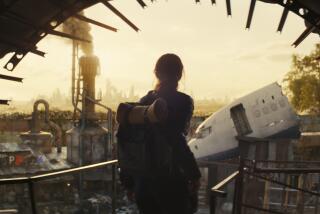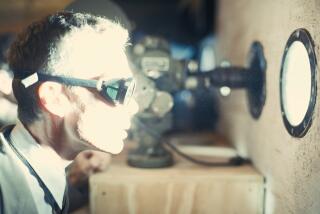Nuclear Workers Appeared Unaware of Dangers
- Share via
TOKYO — Nuclear plant worker Hisashi Ouchi, 35, had a stable career, a family and a home near the sea. But after more than 10 years on the job, he apparently didn’t have an inkling about the potentially lethal hazards of his work mixing highly enriched uranium fuel.
Last Thursday, he and two co-workers dumped a giant batch of uranium into a mixing tank instead of slowly piping it in, his employers said, with the excess causing an unintended chain reaction that flashed the three with radiation at the level of an atomic blast and irradiated at least 46 other people nearby.
On Wednesday, Ouchi received a massive bone-marrow transplant that could revive his badly damaged system and keep him alive “if he is very, very lucky,” doctors said. On Saturday, his colleague Masato Shinohara, 39, will receive a transfusion of blood cells from the umbilical cord of a newborn. The third worker, 54-year-old Yutaka Yokokawa, was exposed to a smaller dose of radiation than the other two and will probably survive without having to undergo either procedure.
Are the men who caused the worst nuclear accident since the 1986 Chernobyl disaster victims or villains? The plant owner, JCO Co., said last week’s accident was a matter of rare human error and has promised that nothing like it will happen again. Company officials have portrayed Ouchi and his colleagues as a trio of blunderers anxious to knock off work early, whose shortcuts unwittingly caused the country’s most serious nuclear crisis.
But as investigations proceed, it appears that the workers are actually casualties of a stunning institutional failure to enforce safety rules. That failure could endanger thousands of nuclear facility employees, not to mention the millions of Japanese who live unconcernedly around the plants.
Although last week’s accident was Japan’s sixth major incident at a nuclear facility in three years, it finally has focused public and official attention on widespread disregard of safety procedures, and has prompted the government into belated action. On Wednesday, the Science and Technology Agency reportedly decided to revoke the operating license of JCO, a subsidiary of Sumitomo Metal Mining Co., which would make it the first Japanese firm to face such a stiff penalty. The plant might have to shut down, authorities said.
Prime Minister Keizo Obuchi finally visited the village of Tokaimura, where the plant is located, Wednesday to inspect the scene of the accident. After eating local vegetables and fish with residents to show that the produce was untainted, he declared that Japan must enact laws to help prevent nuclear disasters.
“The accident has become a concern not only to Japan but to the whole world,” Obuchi said. “To come up with preventive measures is the way to recover the people’s trust toward nuclear energy.”
About the same time Wednesday, police investigators raided both the plant and JCO’s Tokyo offices to collect evidence of safety lapses. Authorities are deciding whether the company should be charged with criminal negligence and violation of nuclear regulations.
Investigations since the accident have found that the JCO workers indeed made mistakes during the fuel-mixing procedure, which they were performing for the first time and without special training. They had little knowledge of the volatility of the enriched uranium they were handling and what quantities would spark a chain reaction, investigators said.
And while police have confirmed that the company had distributed an illegal, secret manual instructing employees to bypass safety procedures for the sake of speed, it seems that the workers involved in the accident devised further shortcuts themselves. The three were wearing just T-shirts, not required protective gear and film badges that measure cumulative exposure to radiation.
Critics have long thought that Japan’s nuclear safety procedures were lax, especially at fuel processing plants like JCO’s, which have not been thought to be as susceptible to major accidents as nuclear reactors. Now, they fear standards have slipped to critical levels. One industry inspector who declined to be named said that government inspectors are posted full time at the reactors but that the fuel-processing plants are rarely checked after their initial licenses are granted.
One official involved with Japan’s nuclear power industry was amazed at the low level of safety knowledge he encountered in a recent meeting with union leaders from processing plants.
“They seemed to have no information about how to handle problems caused by nuclear accidents,” said Hiroshi Kimura of the Electric Power Industry Labor Union Federation. “It was clear they never anticipated that kind of accident would happen.”
Even though the accident was the second to occur in Tokaimura in three years, the people who live in the coastal village apparently didn’t think much about potential dangers. About one-third of the population relies on the nuclear industry for employment; residents’ houses and lives are intermingled with the 13 nuclear facilities located there. The old farming town has become home to hundreds of nuclear physicists and scientists who work at atomic research centers. But most employees do far less sophisticated work to keep the plants running.
Kenji Higuchi, a photographer who has been chronicling Tokaimura’s nuclear industry for years, compares it to the coal mining industry, where the work is repetitive, wages are unexceptional, and the possibility of disaster is an unspoken part of the job.
“People think what they are doing is cutting edge, but they are really just factory workers,” he said. “They don’t need technical skills. All they need is strength.”
More to Read
Sign up for Essential California
The most important California stories and recommendations in your inbox every morning.
You may occasionally receive promotional content from the Los Angeles Times.










